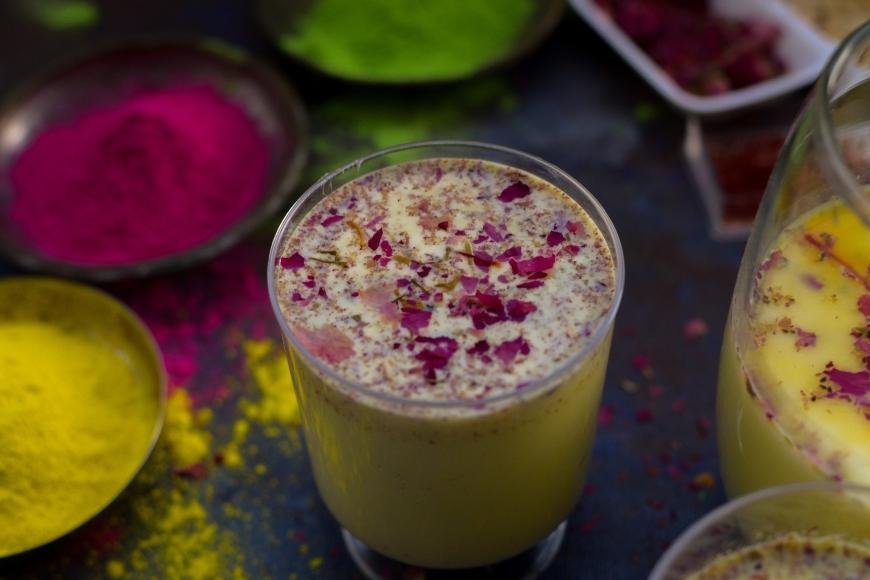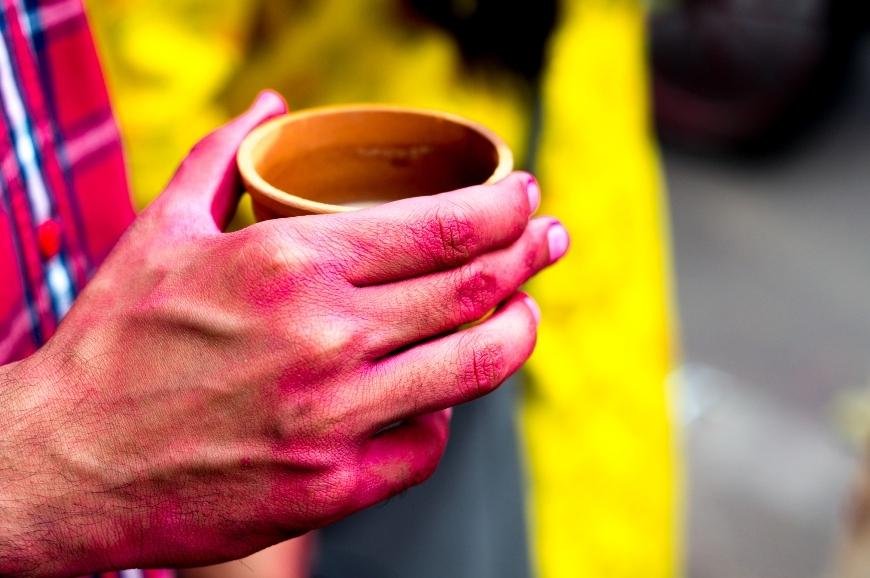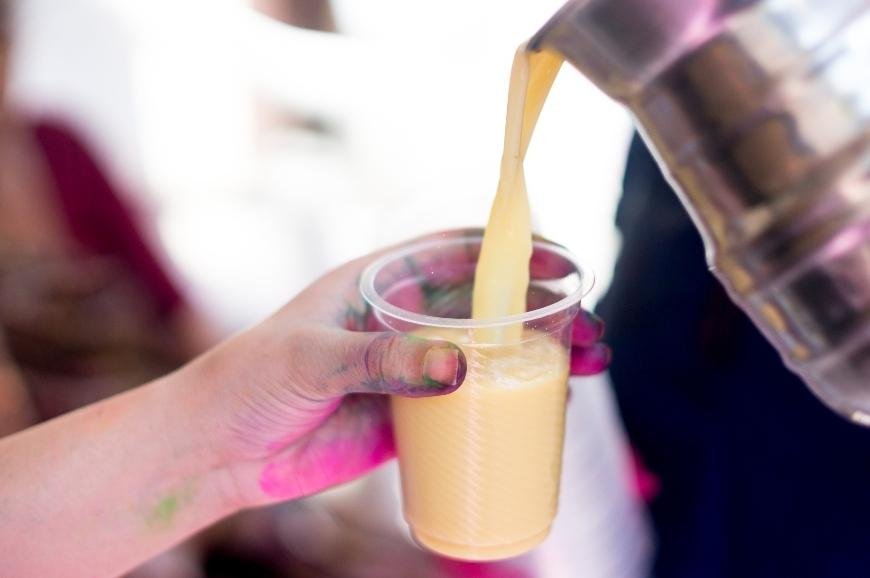What Is Bhang and How to Make It
Explore what is Bhang and how to make it: uncover its history, health benefits, preparation methods, and responsible consumption in our guide.

What is Bhang and how to make it? This ancient, traditional Indian beverage has been consumed for centuries for its unique blend of spiritual, medicinal, and recreational properties. In this comprehensive guide, we'll explore the historical and cultural context of Bhang, as well as its health benefits and risks associated with consumption.
Dive into the process of making traditional Bhang at home by following our step-by-step guide. Discover variations and alternative methods for preparing this potent concoction while being aware of potency levels to ensure responsible consumption. Lastly, we will discuss legal considerations and compliance with local laws when it comes to consuming Bhang.
Let us explore the complexities of Bhang, an integral part of Hindu culture, and learn about its preparation as well as legal considerations. Get ready to expand your knowledge about this intriguing beverage that holds a special place in Hindu culture!
Table of Contents:
- Historical and Cultural Context of Bhang
- The Role of Bhang in Hinduism
- Connection between Yoga, Meditation, and Bhang
- Health Benefits and Risks Associated with Bhang Consumption
- Aware Of Potency And Consuming Responsibly
- FAQs in Relation to What is Bhang and How to Make it
- Conclusion
Historical and Cultural Context of Bhang
Bhang, a cannabis-infused beverage with an ancient heritage in India, has long been used for various religious and social occasions. This ancient concoction has been an integral part of various religious and social celebrations, particularly during the colorful festival of Holi. Let's delve into its historical significance and cultural connections to Hinduism, yoga, and meditation.
The Role of Bhang in Hinduism
Bhang holds a special place in Hindu mythology as it is believed to be associated with Lord Shiva - one of the principal deities in Hinduism. According to legend, Lord Shiva consumed Bhang to rejuvenate himself after performing intense penance. Since then, it has become customary for his followers (known as Shaivites) to consume this drink during religious ceremonies like Mahashivratri or Holi. The consumption of Bhang is said to induce spiritual connection by helping devotees attain heightened states of consciousness while offering prayers or meditating.

Connection between Yoga, Meditation, and Bhang
In addition to its association with religious rituals, cannabis use among yogis has also been documented throughout history. Some practitioners believe that consuming small amounts can aid them in achieving deeper levels within their practice - enhancing focus and promoting relaxation. However, Yoga International warns against relying on substances like Bhang to attain spiritual growth, emphasizing the importance of discipline and consistent practice.
Despite its historical roots in Indian culture, it is essential to recognize that the use of Bhang may not be suitable for everyone. Its psychoactive effects can vary significantly depending on individual tolerance levels and the potency of cannabis used in preparation. Therefore, it is important to be mindful of the potential dangers that can arise from overindulgence.
Health Benefits and Risks Associated with Bhang Consumption
Bhang, a traditional Indian cannabis-infused beverage, has been used for centuries to induce euphoria and spiritual connection. Its main active compounds are THC (tetrahydrocannabinol) and CBD (cannabidiol), which contribute to its psychoactive effects. While bhang offers potential health benefits, it's essential to be aware of the risks associated with excessive consumption.
Therapeutic uses of THC & CBD found in bhang
The cannabinoids present in bhang have various therapeutic properties that can help alleviate certain medical conditions. Some potential health benefits include:
- Pain relief: Both THC and CBD have analgesic properties that may help reduce pain caused by inflammation or nerve damage.
- Nausea reduction: Cannabis is known for its antiemetic effects, making it useful for managing nausea related to chemotherapy or other medical treatments.
- Anti-inflammatory properties: The cannabinoids in bhang can potentially decrease inflammation throughout the body, providing relief from symptoms associated with inflammatory diseases like arthritis.
Potential risks associated with excessive consumption
Despite these possible health benefits, consuming large amounts of bhang or using it frequently over an extended period can lead to negative impacts on brain development and cognitive function. Some concerns include:
- Addiction risk: Regular use of high-THC products like bhang may increase the likelihood of developing a dependence on cannabis due to its psychoactive effects.
- Impaired cognitive function: Excessive consumption of bhang can lead to short-term memory loss, difficulty concentrating, and impaired decision-making.
- Mental health concerns: Prolonged use of cannabis may exacerbate existing mental health issues or contribute to the development of anxiety and depression in some individuals.
In conclusion, while bhang offers potential therapeutic benefits for certain conditions, it's essential to be aware of the risks associated with excessive consumption. By understanding its potency levels and using it responsibly, you can enjoy this traditional Indian beverage without compromising your overall well-being.
Making Traditional Bhang at Home
Preparing traditional bhang in the comfort of one's home can be a gratifying and pleasurable activity, connecting to an age-old Indian custom while relishing the distinctive effects of this cannabis-infused drink. To get started, gather your essential ingredients:
- Cannabis leaves (preferably fresh)
- Milk or milk alternative
- Spices such as cardamom, cinnamon, and cloves
- Sweeteners like sugar or honey
Once you have all your ingredients ready, follow these step-by-step instructions to create your own homemade bhang concoction:
- Grind the cannabis leaves. Using a mortar and pestle or grinder, reduce the cannabis leaves to a paste-like consistency by adding some water as needed. You may need to add some water during this process for better consistency.
- Create spiced milk mixture. In a saucepan over low heat, warm up the milk along with spices such as cardamom pods and cinnamon sticks. Simmer for about ten minutes before straining out any solids from the mixture.
- Add sweetener & combine with cannabis paste. Stir in sugar or honey according to taste preferences into spiced milk mixture then gradually mix it with ground-up cannabis leaf paste until fully combined - creating a smooth yet potent drinkable liquid.
- Serve chilled & enjoy responsibly. Beware: potency levels vary depending on strain/type/source so start small when consuming for the first time.
Consuming bhang is a popular practice in India, where it is often consumed during the festival of Holi. Bhang is also available in other forms such as bhang thandai and bhang goli, which are ayurvedic medicines made from the cannabis plant. However, it is important to note that the consumption of cannabis is illegal in many countries and should only be done in places where it is legal and with caution.
Variations & Alternative Methods for Preparing Bhang
Experimenting with different variations of bhang can lead to discovering new flavors and experiences tailored to your personal preferences. While the traditional recipe focuses on using cannabis leaves, milk, spices, and sweeteners, there are alternative ingredients and methods you can try.
Adding other components from the Cannabis plant
Besides using cannabis leaves in your bhang preparation, consider incorporating cannabis flowers or seeds into the mix. These parts of the plant contain higher concentrations of THC and CBD compared to just leaves alone. However, be cautious about dosage as this may increase potency levels significantly.
Experimenting with unique spice combinations
To add a twist to your homemade bhang concoction, experiment with various spice blends that suit your taste buds. Some popular options include cardamom, cinnamon, nutmeg, or even saffron for an exotic touch. Don't hesitate to get creative.
Alternative Preparation Methods: Blending & Substituting Milk
If you're looking for a smoother texture in your beverage or want a quicker method than grinding by hand and simmering over low heat - blending is an excellent option. Blend all ingredients until a smooth texture is achieved, then serve chilled or at room temperature.
In addition to milk-based recipes like traditional bhang preparations, yogurt-based alternatives are also worth exploring if you prefer tangier flavors or have dietary restrictions related to lactose intolerance. Alternatively, water-based bhang recipes can provide a lighter, more refreshing experience.
Remember that experimenting with variations and alternative methods should always be done responsibly. Start with small quantities to gauge your tolerance levels, especially when incorporating higher potency ingredients like cannabis flowers or seeds. Enjoy the process of discovering new flavors and experiences while honoring the cultural essence behind this age-old recipe.

Aware Of Potency And Consuming Responsibly
When it comes to consuming bhang, understanding its potency is crucial for a safe and enjoyable experience. Bhang's psychoactive effects are primarily due to the presence of THC, which can vary significantly between different strains and sources of cannabis. To avoid any unpleasant surprises or adverse reactions, it's essential to start with small quantities and gradually increase your intake as you become more familiar with your individual tolerance.
Short-term side effects associated with excessive consumption may include dizziness, paranoia, increased heart rate, dry mouth, and impaired memory or coordination. Being aware of these potential risks will help you make informed decisions about how much bhang to consume.
Recognizing potency levels in bhang
To gauge the potency of your homemade bhash concoction accurately, consider using a THC testing kit. These kits allow you to measure the concentration of THC in your beverage so that you can better control dosages based on personal preferences or sensitivities. Keep in mind that factors such as strain choice and preparation methods can influence overall potency levels.
Tips for responsible consumption
- Pace yourself: Start by consuming a small amount (e.g., half a cup) and wait at least an hour before having more since it takes time for ingested cannabinoids like THC to take effect.
- Stay hydrated: Drinking water or other non-alcoholic beverages can help counteract the drying effects of cannabis on your mouth and throat, as well as prevent overconsumption due to thirst.
- Avoid mixing with alcohol: Combining bhang with alcoholic drinks may intensify its psychoactive effects and increase the risk of adverse reactions. Stick to consuming bhang by itself for a safer experience.
- Know your limits: Be aware of your personal tolerance levels and respect them. If you're new to bhang or have a low tolerance, it's best to err on the side of caution when determining how much to consume.
In summary, being mindful of potency levels and practicing responsible consumption habits will ensure that you enjoy the cultural tradition of bhang safely and responsibly.
Legal Considerations and Compliance with Local Laws
As a responsible bhang enthusiast, it's crucial to be aware of the legal restrictions surrounding cannabis use in various jurisdictions. While bhang has deep cultural roots in India, cannabis remains illegal there, despite its popularity as a traditional beverage. Before attempting any preparation or consumption endeavors, always comply with local laws and regulations.
In some countries like the United States, marijuana legality varies by state, making it essential for you to understand your jurisdiction's specific rules on cannabis possession and consumption. In certain states where recreational marijuana is legal (e.g., California), preparing and consuming bhang may not pose any issues. However, other states have strict limitations on THC content or only allow medical marijuana usage.
If you reside outside of the US, familiarize yourself with your country's stance on cannabis before indulging in bhang preparations. For instance, Canada legalized recreational cannabis in 2018 but has specific guidelines regarding home cultivation and possession limits that must be followed.
In conclusion, always prioritize your safety and adhere to local laws when exploring bhang's rich cultural heritage. By staying informed about jurisdictional regulations on cannabis, you can enjoy this traditional beverage responsibly while respecting the law.
FAQs in Relation to What is Bhang and How to Make it
What is the raw material for bhang?
The raw material for bhang is cannabis leaves and flowers, which are ground into a paste. This paste typically contains THC (tetrahydrocannabinol) and CBD (cannabidiol), two active compounds found in cannabis plants that provide psychoactive effects and potential health benefits.
What are the sources of bhang?
Bhang can be sourced from various strains of Cannabis sativa or Cannabis indica plants. It is traditionally made using fresh leaves and buds harvested during specific times of the year to ensure optimal potency. In some regions, like India, it's available at government-authorized shops called bhang shops.
Is bhang available in the USA?
Bhang may not be readily available as a traditional product in the United States due to varying state laws on cannabis use. However, you can find similar products such as edible marijuana-infused drinks or make your own version with legally obtained cannabis if permitted by local regulations.
What is bhang called in English?
In English, "bhang" might refer to "bhaa¹…g," which translates to "cannabis" or "marijuana." Bhaa¹…g specifically refers to an Indian preparation made from crushed cannabis leaves mixed with spices, milk or yogurt that creates a beverage consumed for its intoxicating effects.
Conclusion
In conclusion, Bhang is a traditional Indian drink made from the leaves and flowers of the cannabis plant. In Hindu culture, Bhang has been a significant element for many years and is thought to have potential healing effects when taken in moderation. To make your own bhang, simply combine milk, sugar and ground cannabis in the right proportions.
Remember to consume bhang responsibly by recognizing potency levels and understanding local laws regarding cannabis use.






































































































































